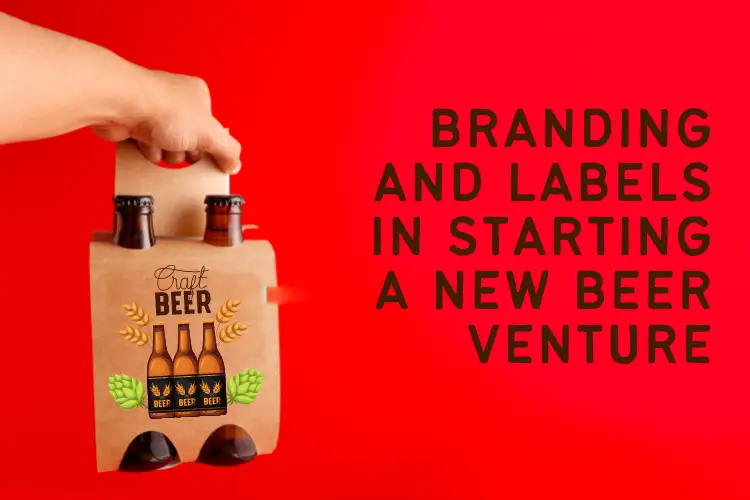This is a resounding yes! I will stand and shout it from the mountaintops. Branding and labels are everything. If they were cars, they would correlate with make and model.
A strong brand identity defines your product and image. Artful and unique labels create an emphatic response in the consumer, to make an emotional connection. When starting a new company, make sure there is a strong (preferably formal) creative team.
Branding is more than a name and a series of nice artwork. It is multi-layered and nuanced. There is a promise and identity, implicit and explicit. The labels are the hook, albeit vital. The brewer’s message defines people’s thoughts of the beer.
Branding
Company Introduction
The first thing to do is introduce your history. This includes biographies of the partners, relationship to beer, and personal introductions.
Mission: The mission states the brand’s purpose, something unique to the industry and the consumer. It explains la raison d’être, reason for being and the end goal of the brand?
Goals: A successful business by definition continually improves. Define this clearly within communications with vendors, wholesale, and retail customers, as well as the consumers.
I dislike clichés a lot, however one rings true here: Fake it ‘til you make it.
Brand Positioning – Promise and Segmentation
Americans are in the midst of a beer renaissance not seen since the 1990’s. The difference being that hyper-competition has made the consumer ever more vigilant and overwhelmed.
Even casual beer drinkers may identify quality.
Position
Position indicates where one sits among their peers. It also indicates the brewer’s knowledge of their market on multiple levels.
Know the competition. Market and promote the product within like products, as that is also where your customers are. If Macro-brewed domestics or craft-beers (Bud, PBR, New Belgium Sierra Nevada) are the primary brands in the area, it will be hard to compete.
Do what you must, yet position the product within like products, by price, origin, and concept.
Promise and Message
Why do Coca-Cola, Cheerios, and Budweiser constantly market and reaffirm their message to you. Yes, they want to continue selling, but that is not the point.
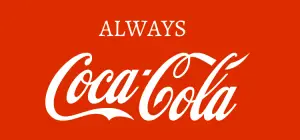
The promise and message is critical to building and maintaining a relationship with the consumer. For buyers to trust a brand, they must hear that message from the brand. Over the decades, successful brands have diligently communicated the promise and message. They earn the consumer’s trust.
For example:
At Brewery Z, we strive to be the beer that reminds you of something, a taste you remember from long ago; a remembrance of something special.
Make an emotional connection with the customer.
Promotion
To be a successful brewing company, one must LOVE talking to people. The beer market has morphed beyond recognition from 10 years ago, and new brewers can’t compete by old models.
The immediate goal is to boost brand awareness and utilize effective promotion.
Along with merchandise, paid print ads, posters, coasters and other Schwag anywhere possible, this barely scratches the surface now. As beers compete for shelf space, so they compete for people’s attention.
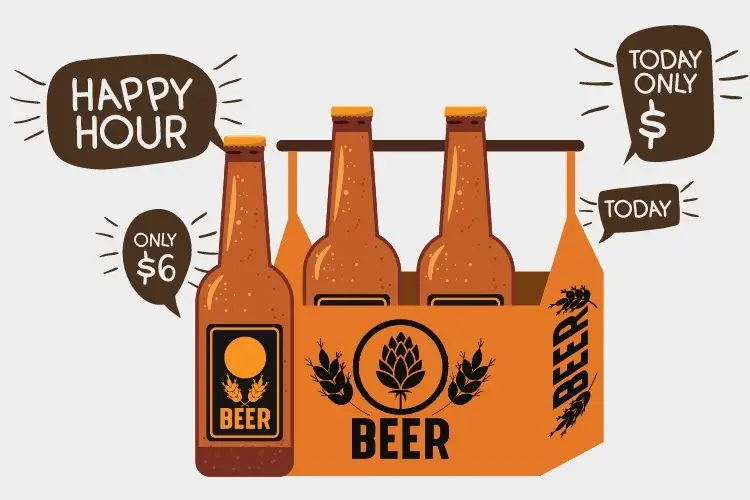
At the French Broad in Asheville, NC, we built a small pub and music venue in year three. This was a remarkable experience to not only enjoy music but build loyalty among customers.
Social media holds a category of its own. A primary tool is brand ambassadors, people with direct relationships to the brewery, sharing their products and experiences within their social circles.
Social media is undoubtedly a part of this.
Brewery Z is a brewery steeped in tradition and fully cognizant of the modern age, targeting customers’ quality expectations, utilizing an array of modern social media, and tried and true grass roots marketing techniques.
Consumption value – functional, social, emotional
There is a consumption value within the product itself, functionally speaking but more importantly, of emotional, epistemic, and conditional value. (Sheth, 1991)
The functional value of beer is self-evident, relaxing, social, or numbing. And the emotional aspects we have observed at length.
Of particular focus here is the epistemic value: the search for the product as a search for knowledge. The experience of the search, the interactive mix involved in the culture of the product have tangible, measurable value.
As the choices to the consumer are near limitless, this combination of implicit factors plays heavily into modern beer company branding.
Labeling
I’m not an artist, nor do I play one on TV.
I also had very retro tastes in beer labels and back in the early days. We’d make them at home.
I modeled them after vintage beer labels gleaned from Historic Wisconsin Breweries, a book I had lying around (I don’t remember the exact name!).
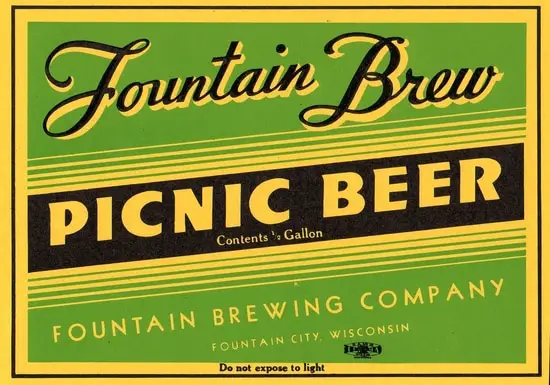
To me they were vintage and cool, to the public they fell flat, so had to be reworked repeatedly.
We were creative but that didn’t mean that what looked cool could be effective.
We also made the mistake of not having clear and consistent motifs throughout our branding.
We did have a primary symbol at French Broad Brewing, but it often got lost in the wash.

We had professional illustrators working with us, several of them.
And therein was another issue. Product-to-product, at times our labels hadn’t the continuity to clearly establish a theme.
My interests were eclectic. I liked French food and Football. I listened to roots rock and really dug electronica.
Perhaps the labels reflected that.
Good for me and not necessarily good for the market. Marketing requires complex ideas, clear themes, and measurable trends.
A few labels took. So, have a savvy design team and a clear motif, concept, and unified construct of what the labels will be.
When a patron walks into the bar, they must see the tap handle and without thinking say, “I’ll have a Z.”
Later, we got it. For a time, 13 Rebels became our most popular.
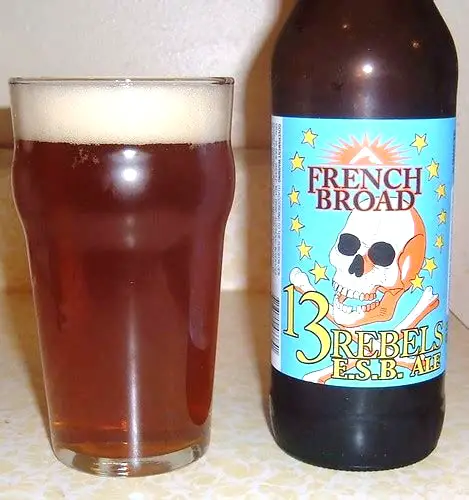
What is Customer Relationship Management – CRM?
I want to briefly introduce another topic, as our primary theme addresses your image to the consumer. Once we attract and get a customer’s attention, the question is:
What do I do with them?
We have their attention for one day, one week, or one glass. We must keep them. What’s next?
CRM is defined by trust, commitment, and responsiveness to customers and consumer needs. Clearly understanding CRM is vital to successful relationship management.
Communication
Communication is key to identifying customers, determining their needs, and fulfilling their wants. Listen first, speak after and therein what they want.
In the pub, speak with the patrons, if a wholesaler, speak to the distributor, their reps, and the bartenders and managers. Listen carefully to what they say. Everyone contributes, even if they are not in total alignment to your mission.
Vision
Vision is not only an image of the future, but willingness to take risks. Vision is also the perception to understand and anticipate customer needs.
To adapt and anticipate comes from listening, creativity and intuition. It also stems from the mission. Once a venture has begun it must navigate the market. Be adaptive and do not fear change.
Process
Process is the metrics and procedures for fulfilling needs, taking in feedback, and incorporating useful data.
This is how you organize your business, the part that incorporates customer needs and feedback interfacing with your marketing approach. The creative and abstract is a vital element and must be mixed with a clearly defined goal of how to reach people, using the tools available to you. Many start-ups and young breweries have a tiny marketing budget. Large or small, plan as if money is no issue. Hey, you wanted to be creative!
People
People are the front-line resource of CRM strategy. Yes emails, texts, tweets, and Social Media posts are OK, but have a very low channel richness; they don’t message deeply.
Personal communication, face-to-face, phone or Skype calls are by far the most effective way to maintain relationships. They are channel rich.
You and your team continually communicate your message. Be proactive, unified and clear about it. Let the talented communicators, the sales people, do their job. If you have a mercurial artisan brewer, send him to the beer festivals to drink and make merry. He doesn’t belong in distributor meetings and sales calls.
The Concluding Pitch
Building a brewery is far more than planning, set-up and production. There must be a story and a message, one that resonates with people implicitly and explicitly.
A critical part of the brewery’s job is building image and mystique. This is what branding, labels and consumer relationship management are all about.
Note :
KMB Consulting can assist you in all of your challenges, large or small. Brewers need support and input. It is an artisanal craft, refined by years in the brewhouse. It is also an uncommonly specialized business.
Interested in a start-up or expansion? From conception to construction and pilot brews, we have the experience.
Today’s brewers have puzzles that need a fresh perspective. I’ve walked in your shoes. I know the victories and struggles that come with the brewer’s life. Reach out to us. No problem is unfixable. Check KMB Consulting.
